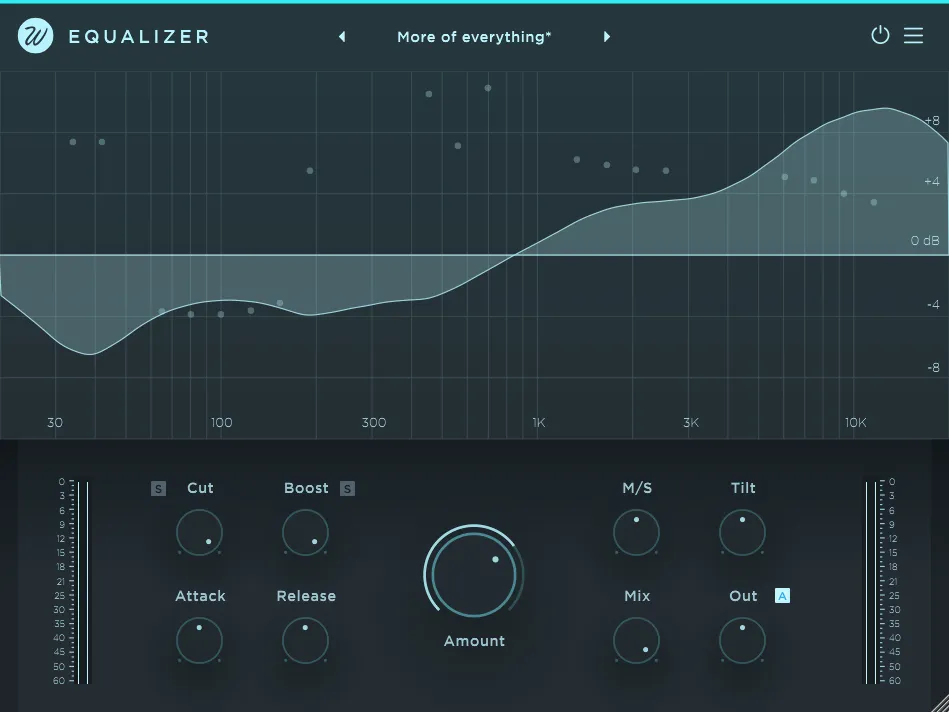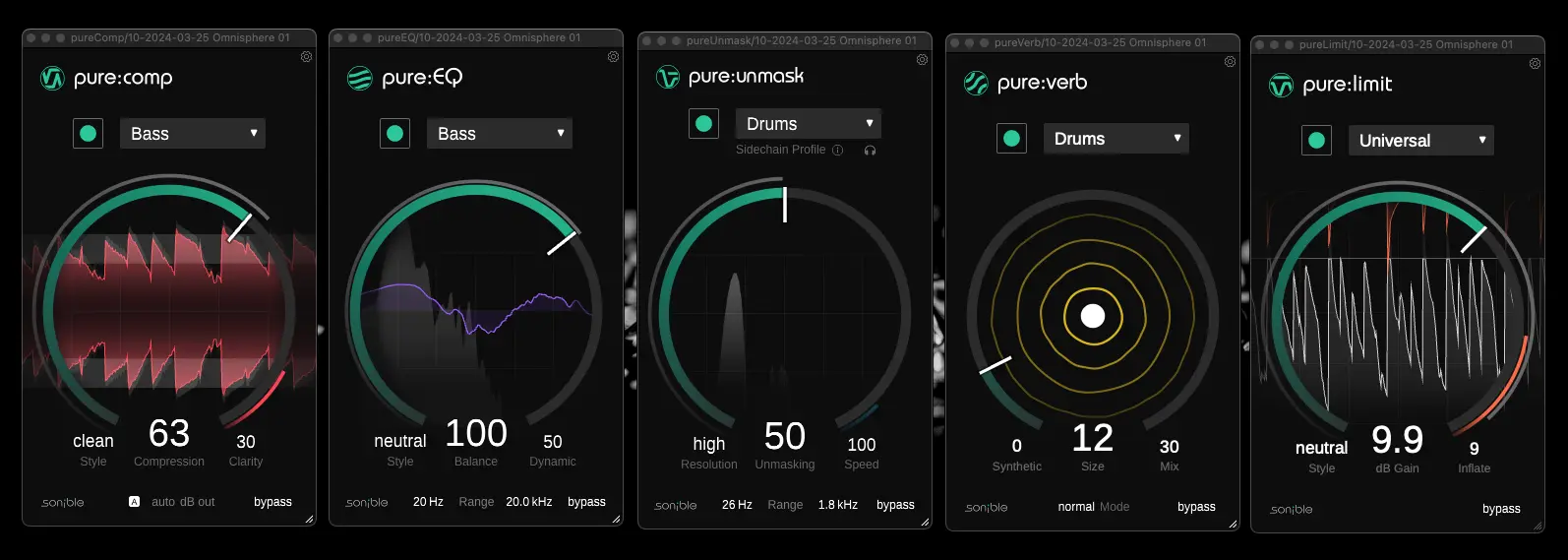In this article, we’ll cover everything from what a delay plugin is to how you can use one to enhance your musical projects.
If you’ve dabbled in music production even just once or twice, then chances are that you’ve heard about delay plugins before. But do you know what they actually do and how they work? Put simply, a delay plugin is an audio effect that adds echoes or reverberations to sound recordings. It’s like having a virtual echo chamber inside of your DAW (digital audio workstation). With these powerful tools at your disposal, there’s practically no limit to what kind of creative effects you can produce!
In this article, we’ll explore both the basics of using a delay plugin as well as more advanced techniques that will help bring out all sorts of unique sonic textures in any recording project. So if creativity and innovation are on your agenda today, read on – because with delays anything is possible!
What Is A Delay Plugin?
Delay plugins are the holy grail of modern music production. They can take your tracks from good to great in a single step! A delay plugin is an audio effect that adds echoes and reverb-type sounds to a track, creating depth and atmosphere. By combining multiple delays with different parameters, you can create lush soundscapes that will captivate any listener.
But how do you use these magical tools? Well, it’s actually quite simple. All Delay plugins have several adjustable settings such as delay time, feedback, dry/wet mix and modulation. These allow producers to customize their sound exactly how they want it – whether they’re looking for subtle textures or big epic swells. Experimenting with different combinations of settings can help find the perfect sound for each project; something truly unique that no one else has ever heard before!

The Different Types Of Delay Plugins
Delay plugins are like the secret sauce that transform mundane sounds into something special. They add an extra layer of depth, texture, and flavor to any mix. From subtle echoes to wild modulation effects, there’s a world of sound awaiting discovery with delay plugins!

When it comes to creating modern music today, having access to different types of delay plugins is essential for achieving sonic creativity. Whether you’re producing electronic music or mixing rock tracks in your studio, there’s a delay plugin out there tailored for every situation imaginable.
Common varieties include digital delays, analog delays, tape delays (which simulate vintage studio hardware), reverse delays, ping-pong delays (where stereo signals bounce from side to side), chorus/flange/phaser effects (combining multiple delayed copies with pitch shifts or filters). These can be further customized using parameters such as feedback levels, LFO amounts and filter settings for truly unique results. With all these options at your fingertips, the possibilities are nearly endless!
Common Features Of Delay Plugins
Delay plugins are a crucial element in the production of music. They provide an impressive range of effects and can bring a track to life with their unique sonic characteristics. For example, Delay Lama is a popular delay plugin that’s found on many producers’ workstations due to its versatility and ease-of-use.
In short, delay plugins allow producers to create echoes within their tracks for added depth and texture. Common features include feedback controls which determine how long the echo will last; tempo synchronization so the rate at which it repeats matches the song bpm; modulation capabilities such as chorus or flanging; and filters like low pass or high cut so you can adjust tone without affecting volume.
By combining these elements, you can craft distinct sounds that stand out from the rest – anything from subtle reverb tails to radical rhythmic patterns. With all this control over your audio, you’ll be able to explore new soundscapes never before heard! What’s more, being able to manipulate every parameter makes experimenting with different ideas easy and fun – opening up endless possibilities when producing music.
Ready to take your productions even further? Let’s dive into exploring the parameters of a delay plugin…

Exploring The Parameters Of A Delay Plugin
Exploring the parameters of a delay plugin is an exciting journey towards creating unique sonic textures and sounds. In this section, we will look at how to use different kinds of settings to create all sorts of effects with your delay plugin.
When it comes to setting up a delay plugin, there are many parameters available for you to tweak and customize. Depending on the type of effect you want to achieve, you can adjust various aspects such as feedback level, wet/dry mix, EQ settings and more. Furthermore, some plugins offer additional features like modulation or distortion that allow you to further shape the sound in creative ways.
By experimenting with these controls, you’ll quickly discover new possibilities when using a delay plugin. By combining different elements together, you can get creative and come up with something truly unique – be it a subtle echo effect or complete chaos! With so much potential for experimentation, exploring delays provides endless fun opportunities for musicians seeking innovative sounds.
With just a few adjustments here and there, soon enough you’ll have your own custom-made creation ready for action – allowing us to move onto the next step: setting up your delay plugin for basic usage…
Setting Up A Delay Plugin For Basic Use
Setting up a delay plugin for basic use can be like getting into a car and pressing the gas pedal. It’s simple, but it allows you to quickly move your sound around in exciting ways. In this section we’ll take an in-depth look at how to get started with a delay plugin so you can start pushing boundaries right away.
First of all, let’s talk about what exactly a delay plug-in is. Delay plugins are essentially digital effects that allow producers to manipulate time in audio recordings by repeating sounds after they have been played. This technique creates echoes or ‘time warps’ that are used to create interesting sonic textures and rhythms which add depth and character to any track.
Now it’s time to go over some basics on setting up your own delay effect. To begin, set the mix parameter (which controls the level of the processed signal) somewhere between 50% – 75%. Next, adjust the tempo sync (which syncs the rate of repeats with the song’s tempo). Finally, tweak the feedback control (which determines how many times each note will repeat itself), and experiment with different settings until you find something that sounds good! Don’t forget that there are plenty more parameters available as well, such as modulation speed, high pass filter frequency etc., so feel free to explore them too!
So now you know how straightforward it can be to get going with delay plugins – simply make sure your mix levels are balanced correctly and then play around with all of its knobs and dials until you find what works best for your project. From here you’ll be ready to dive headfirst into creative experimentation; exploring fascinating new soundscapes through manipulating time itself!
Using Delay Plugins For Creative Effects
Delay plugins are incredibly useful for producing creative effects. With the help of delay plugins, producers can create a huge range of sonic textures and atmospheres that would otherwise be impossible to generate. According to statistics, more than half of all music production professionals use delay plugins in some way or another when creating their tracks.

Using delay plugins for creative purposes involves manipulating the plugin’s parameters to achieve desired results. These include setting the length of time between echoes and how much signal is sent back into itself (feedback). Additionally, different types of delays offer unique characteristics such as chorus and phaser which further expand one’s sound palette. By combining these options with other audio processing tools like equalizers and compressors, it’s possible to produce complex sounds without having to manually edit each note or sample within your project file.
TIP: Experimenting with timing changes on a delay plug-in can yield interesting rhythmic variations – try varying the tempo of your track while keeping the same settings on your delay plug-in! This technique will allow you to quickly dial in new patterns and melodic ideas that may not have been previously available using traditional techniques.
Creating Echo And Reverb With Delay Plugins
Delay plugins bring a unique sense of depth and texture to any music production. Have you ever heard an artist’s track that sounds like the waves are washing over you? That type of soundscape is created in part with delay plugins, which can be used for creative effects when applied strategically.

Think about a singer strumming their guitar while singing softly into a microphone as it echoes through the room; this creates a captivating atmosphere that evokes emotion from people listening. With delay plugins, you can do just that: create stunning reverb or echo effects with relative ease. To get started, all you need is your favorite DAW (Digital Audio Workstation) and some basic understanding of how they work.
Using delay plugins allows producers to add layers of complexity to their projects without having to record new material or use complex mixing techniques. For instance, using multiple delays together can help fill out the mix by adding subtle tones and textures throughout each song section. Furthermore, combining different types of delays – such as reverberation and tape-style emulations – will give your tracks a unique character that stands out among other productions. By experimenting with different settings on your delay plugin, you’ll find yourself creating beautiful sonic landscapes in no time!
From here we travel further down the rabbit hole towards automation; fine tuning those parameters so our beloved tune shines even brighter than before…
Automating Delay Plugin Settings
Ready to take your delay plugins up a notch? Automating settings can help you create stunning effects that will leave listeners mesmerized. Let’s dive in and explore the possibilities!
This technique requires a bit of set-up, but it’s worth every minute spent. You’ll start by creating an automation lane for each setting you want to adjust over time. For example, if you wanted to automate the feedback parameter on your Delay plugin, adding this lane will give you control over how much echo is added throughout the course of your track or performance. This allows you to make subtle changes like slowly fading out echoes at certain points or ramping up levels as needed for a more intense sound.
These automated parameters also work great with modulation plugins such as chorus and flanger effects. With these tools at hand, even the most inexperienced producer can add motion and energy to their audio creations – all while controlling precisely when those elements appear in their project. The sky’s the limit here; no matter what kind of emotion or atmosphere you’re aiming for, automating delay plugins is an effective way of getting there quickly and efficiently. Moving onto using them in a live situation…

Using Delay Plugins In Live Performance
Delay plugins can be a powerful tool for live musicians who want to add extra depth and texture to their performances. These types of plugins are an ideal way to create interesting soundscapes that would otherwise require multiple effects pedals or pieces of outboard gear – but they’re also capable of much more than simply adding some reverb. In this section, we’ll take a look at how you can use delay plugins in your live performances.
First off, there’s the obvious applications involving creating echoes and delays. With just a few controls, it’s possible to make subtle adjustments to your signal path that will have dramatic results on stage. Here are four ways you can incorporate delay into your live performance: 1) Create space around individual notes by adding a single repeat with low feedback; 2) Add ambiance using long delays with high feedback settings; 3) Use rhythmic delays as an accompaniment instrument; 4) Layer sounds together by combining different delay times and automation techniques.
Using these tools effectively requires experimentation and practice, so don’t be afraid to experiment with different settings until you find something you like! You may discover entirely new sonic possibilities when playing with delay plugins in front of an audience – from gentle textures all the way up to walls of sound. It’s worth taking the time to explore what is achievable before heading out on tour or heading onto the stage each night.
My recommendations
Firstly I would look into the delays that is shipped with your DAW of choice. Ableton Live has a couple of great delay plugins. Cockos Reaper is more limited but there is at least one.
As you might know, I am a sucker for Valhalla plugins so I would also take a look at Valhalla Delay or the free Valhalla Super Massive.
HoRNet plugins also has a nifty little Deelay
Softube Echoes is also a great analog style echo.






